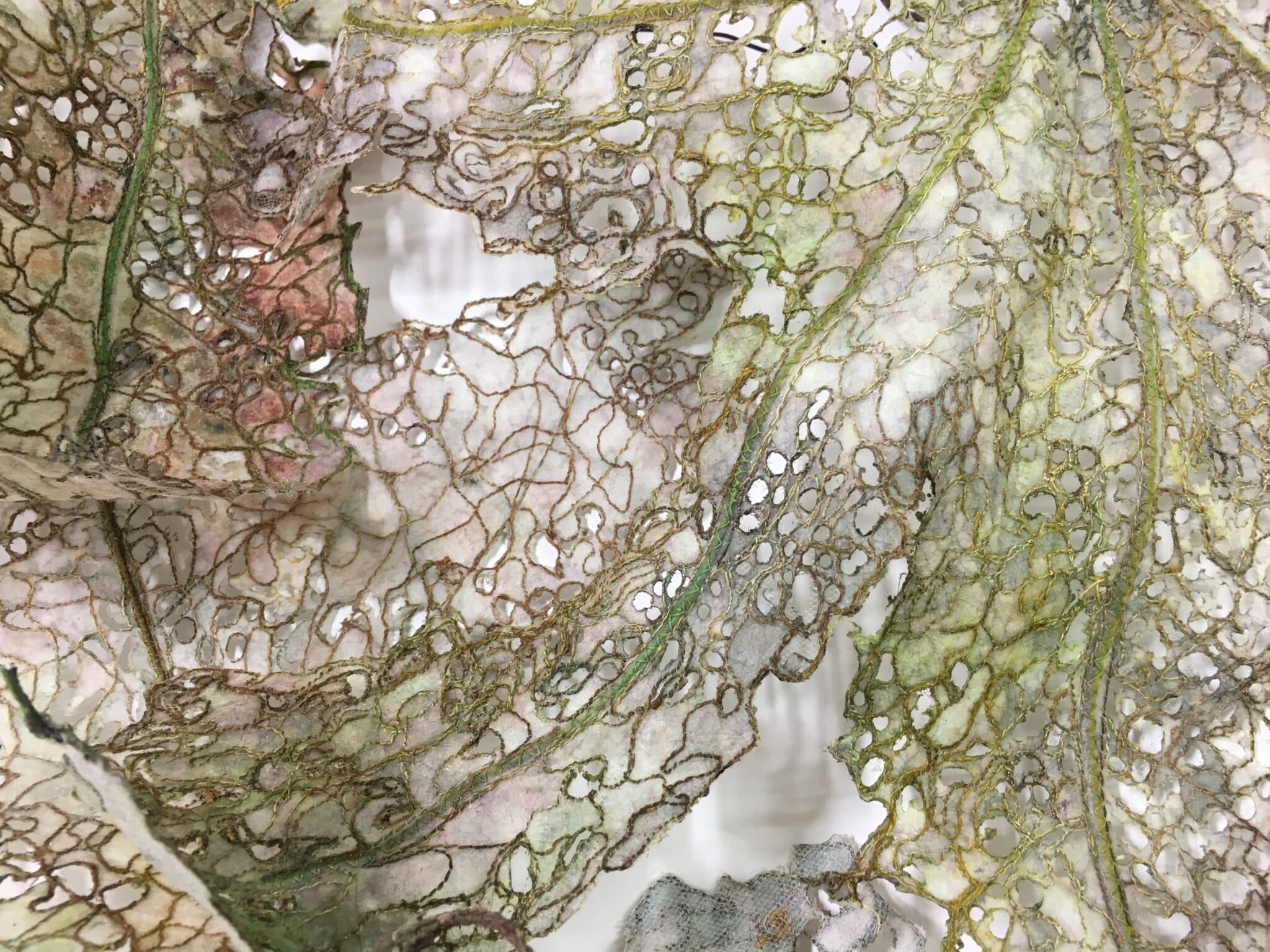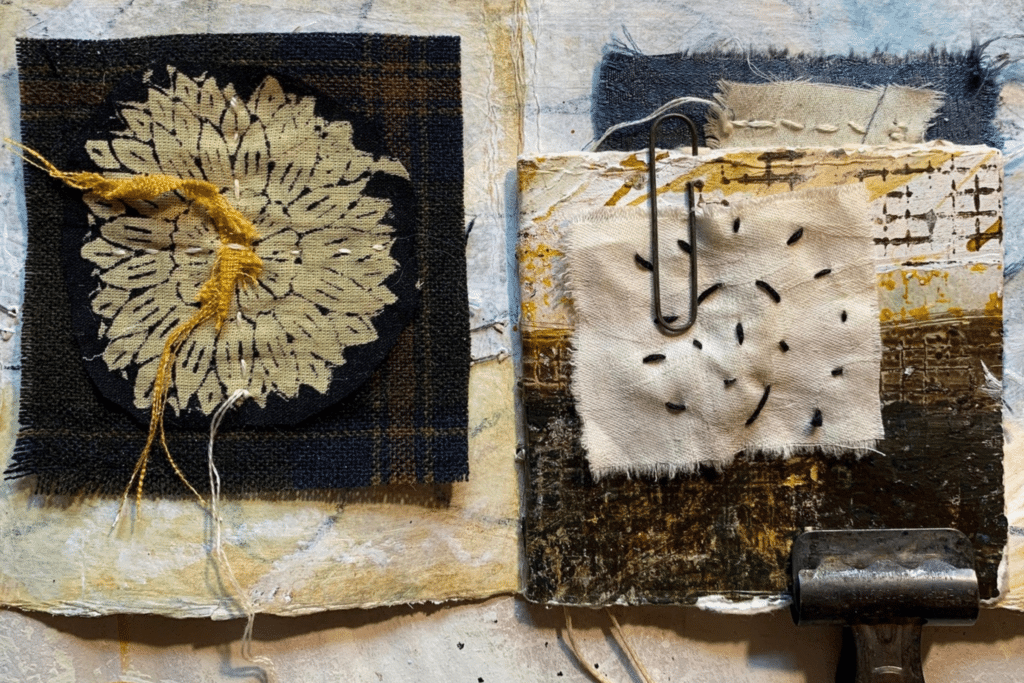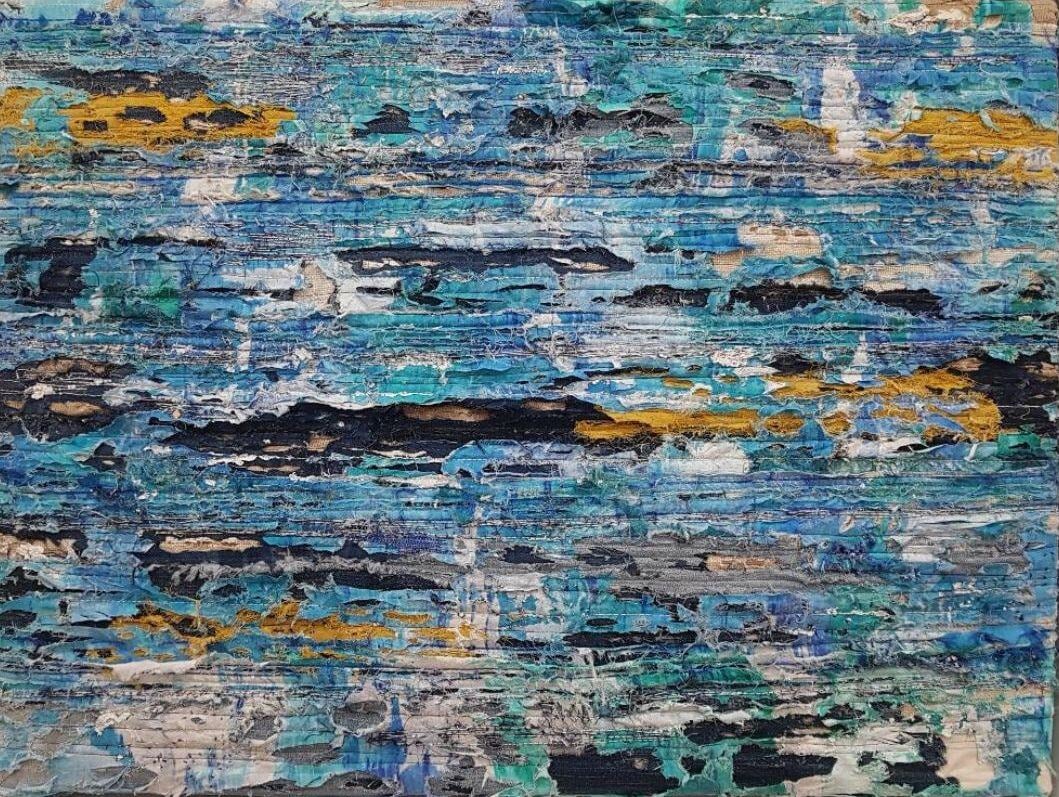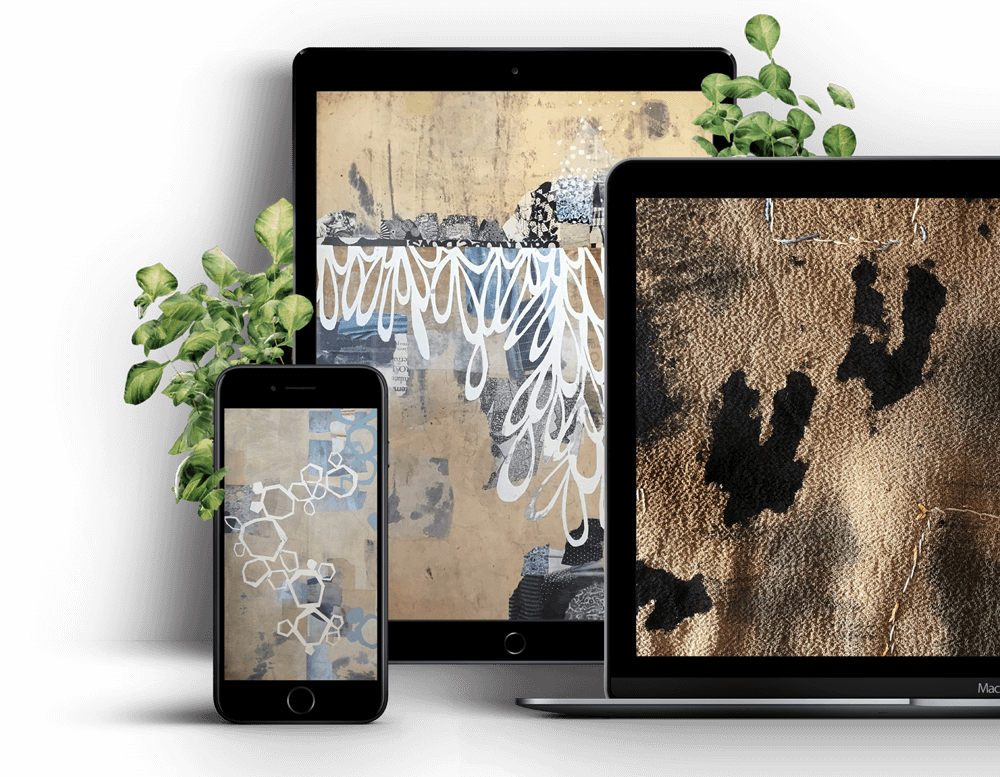Heather Hietala
From rural beginnings to rag rugs to journals, Fibre Arts Take Two talked to artist Heather Hietala about her art and her life.
Heather’s Friday Feature Artist Interview can be found at the bottom of this page.
Heather Hietala is a studio artist, workshop teacher, adjunct professor, and permaculture gardener living in Asheville, North Carolina.
For Heather, the artistic experience begins with an idea that drives her to learn a technique that will best give life to her intention. The results are beautiful artworks that distil and express her journey through life.
From richly coloured textiles and fibre art to ceramics and sculpture using wire, paper, gut and natural materials from her orchard garden, Heather uses a diverse range of materials that allow her to explore form, purpose and design through experimentation as she uses intuition and experience to guide her, engaging in a dialogue that explores relationships and the cyclical nature of life.
The vessel, in all its many forms, is now her muse. Heather is interested in the duality, and the idea of two or more things that are intrinsically bound together, made by the same hand created separately; individual pieces are presented in pairs or groupings that strengthen and highlight this sense of similarity and contrast.
Her work has been published and exhibited widely, and Fibre Arts Take Two greatly enjoyed talking to Heather about her art and life.
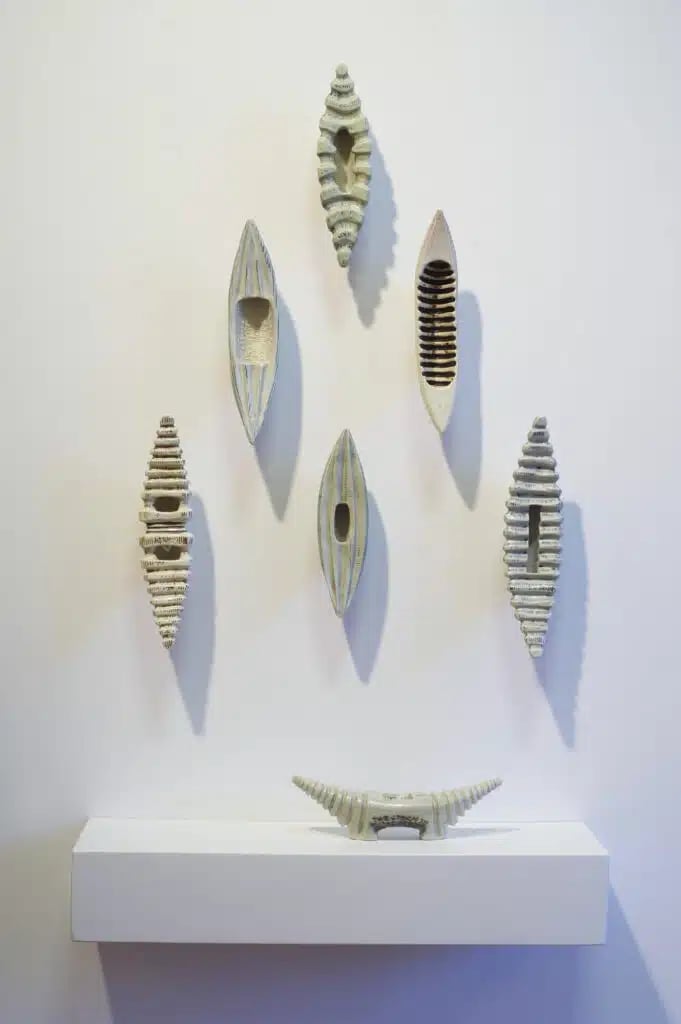
Rural beginnings
Heather grew up in rural New Hampshire, “When I say rural,” she says, “I mean at the end of a half-mile dirt road. A town that after 50 years has finally hit, I think, 1100 People in 28 square miles.”
Rural New Hampshire proved a significant influence on Heather’s art. As she explains, “The colourful palette that I grew up with was all around me. We had wonderful summers, amazing falls when the world’s on fire, and then we had six months of winter, which was really quiet and meditative. When spring came, you heard the first birds, you saw that first bit of spring green, and you saw colour afresh every year.”
Japan
New Hampshire wasn’t Heather’s only influence.
“At 16, I went to Japan for a year to study as an exchange student,” she says, “I came back, finished high school a year later, then went off to college, tried to learn Japanese at the University of New Hampshire and decided it was out of context. So I went back to Japan for a year to study the language. Both times I lived with Japanese families and was immersed in their culture in a way that resonated with me. The Japanese culture is so in tune with the seasons, so I fit in really well. Those were influences that I’m not sure I realised at the time.”
Inward journey
Heather’s artistic career didn’t start with textiles, “My undergrad was in painting,” she says, “and I was starting to collage fabric onto the fabric as a substrate. I also was printing, and I ended up printing on fabric. And so that was a natural progression. My art is the journey that was the beginning of not looking outward but looking inward in a certain way to my journey for inspiration.”

Rag Rugs
Heather broke new ground with her 1998 book, Weaving Contemporary Rag Rugs. Her relationship with rag rugs, though, took some time to grow, “In Japan, you spend a lot of time on the floor, so my relationship to the walls, the floor, the ceiling, all that is different than a lot of traditional Westerners. I still work a lot on the floor!”
Her time in Japan and her relationship with space lead to an artistic concept when Heather was at college, “The idea was to put one of my textile images on the floor, make a trapdoor in the floor and put it on a rug. I’d grown up with rag rugs on cold floors in New England, and I wanted a rug that had substance. They did not teach rag weaving in grad school. That was not an option. So I took a two-day workshop in rag weaving. There I was in grad school, trying to defend these rag rugs. And I mean, rag rug is sort of like your dishcloth; a dirty word. And especially at that time, you have to remember; this is 30 years ago right, now we’re a lot more interdisciplinary.”
Learning about rag rugs was an eye-opener for Heather, “It was like, ‘People need to know about this’. So I reached out to all these different weavers to see if they liked the book. Nobody would jump on board. And so someone mentioned, ‘Well, why don’t you write it?’
Every journey is different
Many of Heather’s pieces sell as sets.
“They’re sold as a set, but they were not made to be a set,’ she says, “I make lots of vessels, and they’re not geared to be anything. There’s a certain wonderfulness that they have because they were not planned. I might have had one vessel for 10 years before it finally finds the grouping it belongs in. It’s like, ‘which vessel do you resonate with today? And which instrumental emotion do you resonate with?’ Every journey is different. If I tried to make a set, they would look contrived; it would be a different experience. Life happens, and you have to let it move through you. You have to let it go.”
Journals
As much as for her stunning art, Heather is known for her journals. “I work with journals,’ she explains, “but not in the traditional written ‘keep a diary’ way. I use a journal when I need to, so I always have it handy to be a repository. I have a textile swatch journal, a little pocket journal that’s about words. I have journals from travels, I have a journal from a conference in Hawaii. I have a lot of journals that have become my library.
There’s some that are finished. Some are not. That’s why they’re creative companions; they are still a part of my life. They’re an active part of my life. They are a wonderful way of organising my thoughts and my responses and my mistakes, so I don’t make them again.”
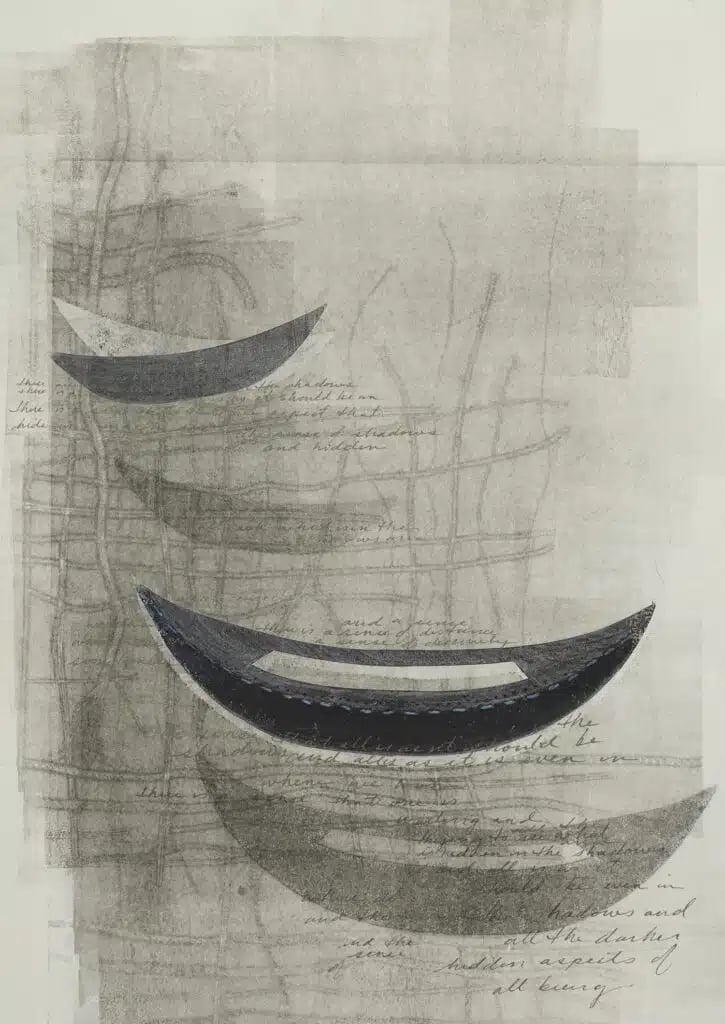
About the artist
In 1989 Heather received a BFA in sculpture and painting from the University of New Hampshire. She was enamoured of colour but did not like having a paintbrush or carving tool between her and her material. She switched to textiles and continued her studies at the University of MA Dartmouth, receiving an MFA in 1993. While there, she focused on surface design and rag weaving. She also studied at Penland School School of Crafts, Haystack Mountain School of Crafts and Arrowmont.
Heather became well known for her colourful decorative textiles depicting staircases and doorways. In 1998 soon after her move to Asheville, NC, she authored Weaving Contemporary Rag Rugs. In 2005 her book was translated into Japanese.
Heather teaches workshops at her studio and at noted craft institutions, such as Penland School of Crafts, Haystack, Arrowmont, Haywood Community College and Warren Wilson College. Her work has been published in American Craft, Surface Design Journal, and Sen Shoku Alpha, among other titles. It has been exhibited in numerous venues, including the Asheville Art Museum, Wustum Museum of Fine Art, Mint Museum of Craft and Design, Atlanta International Museum of Art and Wesserling Textile Museum, France and Singapore Art Museum. Heather’s works are in various private and public collections, including the Wustum Museum of Art, Gregg Museum of Art & Design, North Carolina Arts Commission, The Biltmore Estate, and Fidelity Investments. She has received an NEA Regional Fellowship, a TN Arts Commission Fellowship and two residencies at Centrum Center for the Arts (WA).
Notifications
Join Our Newsletter
OUR YOUTUBE CHANNEL
View our interviews and more on our Youtube channel!
OUR FACEBOOK GROUP
Join our Community and stay updated with our upcoming announcements!
